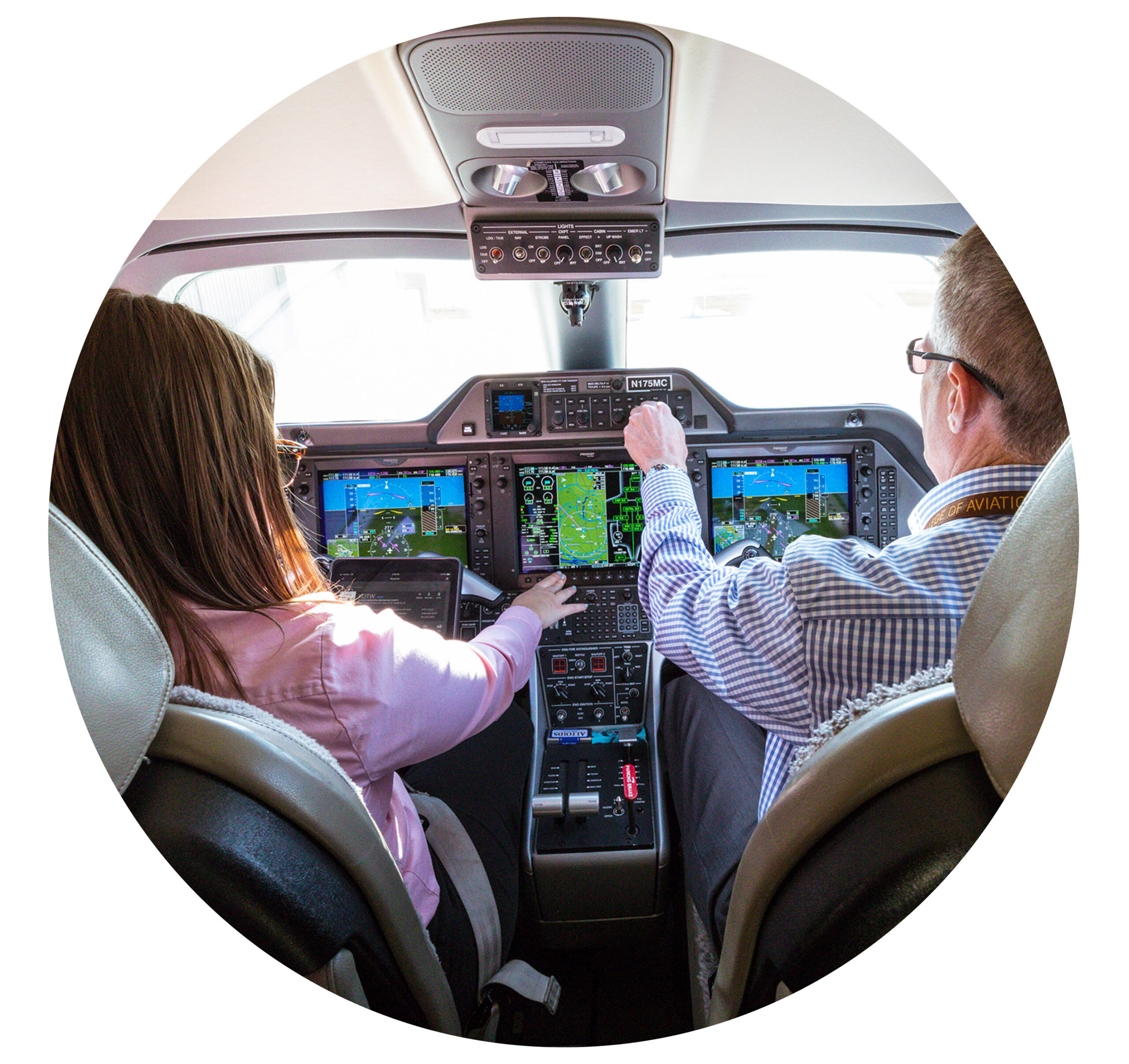A spate of reported incidents of GPS “spoofing” in certain airspace regions last year unnerved many international business aircraft operators. How can operators tell when they’re being spoofed, and how concerned should the industry be about this issue?
First, it’s important to distinguish spoofing from GPS jamming. Many operators have already experienced the latter phenomenon, which involves overwhelming the relatively weak signals from the Global Navigation Satellite System (GNSS) with far more powerful, ground-based streams, blocking data received by navigational systems on the flight deck.
 GPS spoofing, on the other hand, “is a much more sophisticated attack,” said Ben Mohr, offering director for alternative navigation products at Honeywell. “The attacker simulates a valid GPS signal that your receiver will track and might put your aircraft in the wrong location. That can lead to some really serious consequences.”
GPS spoofing, on the other hand, “is a much more sophisticated attack,” said Ben Mohr, offering director for alternative navigation products at Honeywell. “The attacker simulates a valid GPS signal that your receiver will track and might put your aircraft in the wrong location. That can lead to some really serious consequences.”
To date, most reported spoofing attacks have come from the Middle East – most notably Iraq, Iran and Israel – and in the vicinity of Azerbaijan and up through the Black Sea region. However, operators should be cognizant of the potential for spoofing anywhere.
“The displayed altitude may be the altitude at which [the spoofer] recorded the false signal. Airspeed indications may read the speed of the car or truck used to record the spoofed signal, and the timestamp will be for the period when they recorded it. ”
NAT IYENGAR, Gulfstream G650 Captain and Vice Chair, NBAA's International Operators Committee
“We’ve also seen spoofing events reported around Turkey, the eastern part of the Mediterranean, around the Baltic Sea and up toward Murmansk, and in Finland,” added Jens Hennig, vice president of operations for the General Aviation Manufacturers Association (GAMA). “Operators in known conflict regions should already have processes in place addressing the broader risk of flying in those areas.”
A spoofing attack may also take several forms. A “non-coherent,” or asynchronous, attack resembles GPS jamming by overpowering legitimate GPS signals with a stronger counterfeit that the receiver interprets as the actual signal stream.
“This is very easy to do with equipment available commercially,” said Nat Iyengar, a Hong Kong-based Gulfstream G650 captain and vice chair of NBAA’s International Operators Committee (IOC). “You can even record the [spoofed] GPS signal as you’re driving a car,” and then broadcast that signal to an aircraft, quickly confusing aircraft flight crews.
A “coherent,” synchronous spoofing attack more closely mimics an authentic GPS signal derived from the aircraft’s actual position, allowing bad actors to alter the aircraft’s course gradually. That makes such spoofing more difficult to detect, but it’s also harder for a spoofer to execute.
Recognizing the Signs
Immediate recognition of a potential spoofing situation is key to mitigating the risk. Spoofed GPS signals may affect not only aircraft position information, but also ground speed and altitude indications, as well as the aircraft’s clocks. The erroneous position information may also set off the aircraft’s terrain alerting systems and lead to other confusing aircraft behaviors.
“Multiple systems on newer aircraft use GPS in some form or fashion,” added Iyengar. “That could be anything from calculations for enhanced ground proximity warning systems (EGPWS) to the moving map for passengers.”
Depending on your aircraft’s avionics suite, synthetic vision systems may revert to a conventional “blue over green” artificial horizon display, and the indicated GPS position might freeze or move slowly. CHECK GPS, FMS-GPS DISAGREE or similar warnings may annunciate, and the aircraft’s clock might display the incorrect time. Crews may also notice the aircraft turning to intercept the spoofed GPS course.
“Spoofing is something new, but operators in known conflict regions should already have processes in place addressing the broader risk of flying in those areas. ”
JENS HENNIG, Vice President of Operations, General Aviation Manufacturers Association
“The counterfeit GPS signals overpower the normal GPS signals from the constellation, so you’re going to get a whole consistent set of GPS signals that are affected,” added Simon Innocent, commercial navigation offering director at Honeywell. “All those parameters that are acquired by the GPS receiver on the aircraft are all going to be affected in a consistent manner.”
“The displayed altitude may be the altitude at which [the spoofer] recorded the false signal” for a non-coherent attack, added Iyengar. “Airspeed indications may read the speed of the car or truck used to record the spoofed signal, and the timestamp will be for the period when they recorded it.”
 Contrary to some initial reports, the aircraft’s internal reference system (IRS) and other navigation sources should remain unaffected, providing flight crews with important fallbacks to restore their aircraft’s correct course. The confusion stemmed from the use of “hybrid” navigation modes that integrate GPS data with the IRS to position the aircraft more precisely.
Contrary to some initial reports, the aircraft’s internal reference system (IRS) and other navigation sources should remain unaffected, providing flight crews with important fallbacks to restore their aircraft’s correct course. The confusion stemmed from the use of “hybrid” navigation modes that integrate GPS data with the IRS to position the aircraft more precisely.
“There is a clear flow down from dependency on GPS, which in some cases may not even be there, to using the IRS system to augment their positioning,” Hennig added. “Crews may also have DME and VOR DME stations available, and – in the worst case – basic dead reckoning functions.”
“The flight management system (FMS) typically gets affected because it’s using either GPS or hybrid IRS,“ Innocent said. “The good news is there are plenty of signs available on the flight deck to understand what’s going on … including crew alerting system (CAS) messages. Flight decks often have monitors to compare aircraft position between different sources, and crews will be alerted when there’s a disagreement.”
Caution Advised
While GPS spoofing has so far proven to be more a relative nuisance than a serious safety issue, operators need to be aware of the risks. In February 2024, the FAA issued its Safety Alert for Operators (SAFO) on GPS spoofing attacks. The European Union Aviation Safety Agency (EASA) issued a similar Safety Information Bulletin last year.
Acknowledging the possible loss of situational awareness during a spoofing attack, the SAFO “recommends flight crews put additional emphasis on closely monitoring aircraft equipment performance for any discrepancies or anomalies, promptly informing ATC of any apparent GPS/GNSS degradation, and being prepared to operate without GPS/GNSS navigation systems.” The FAA also created a working group with operators and manufacturers to further explore mitigations.
On the OEM side, the ultimate goal is to have robust backups available for the aircraft to draw from when an erroneous GPS signal is suspected. As one example, Honeywell’s Vision-Aided Navigation system uses a downward-facing infrared camera to compare real-time imagery against satellite mapping to provide an absolute position update over land and more quickly detect deviations.
“Our goal when we began with [this system] was to provide continuity of operations even in a GNSS-denied environment,” Innocent noted.
“There is no silver bullet to replace GPS. It's a fantastic technology, and it will take a combination of different sensors to provide the same type of capability GPS provides. ”
BEN MOHR, Offering Director for Alternative Navigation Products, Honeywell
Hardened GPS receivers are another option, Mohr said. “There are systems out there that are designed specifically to shield against jamming or spoofing that I think will end up being part of the solution,” he added. “A third possible solution may be alternative navigation sources that use a completely different sensor” than current systems.
While such solutions “are primarily focused on military users right now,” Mohr said, “we do see them moving into the commercial space as well.
“There is no silver bullet to replace GPS,” Mohr added. “It’s a fantastic technology, and it will take a combination of different sensors to provide the same type of capability GPS provides.”
In the meantime, Iyengar reiterated caution for flight crews. “GPS spoofing may not have proven so far to be as big a deal as initially feared,” he said, “but crews should be advised to stay clear of that airspace, if possible.”
Review NBAA’s communications, navigation and surveillance resources at nbaa.org/cns.



 International Business Aviation Council Ltd.
International Business Aviation Council Ltd.